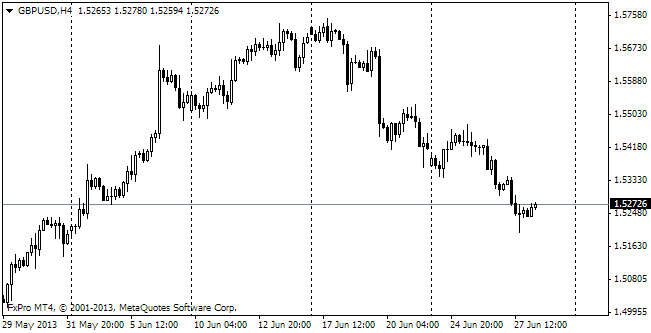EUR/USD
A day after the Fed had announced about its idleness the markets corrected just a little bit. For example, eurusd didn't even go below 1.35. Taking into account that a week ago it was below 1.33 and two weeks ago – around 1.31, it is quite a considerable progress. From the viewpoint of technical analysis, purchases became more intense after the pair had managed to consolidate above the 200-day MA on one of trading days of September. It means that coming back from the summer holidays “big money” saw a bullish picture in the pair. On the fundamental side the reason is strong news from Europe and miscellaneous from the USA. The news from the USA was not that bad to ruin all hopes for the stimulus rollback, but not good enough to convince cautious Bernanke. The Fed's present-day head in his academic past specialized in continuous recessions, so he must have studied the bitter experience of the Fed in the late 30s, when it hurried to toughen the policy and also the experience of Japan at the beginning of the 90s, when the government let the things take their own course, relying on the strength of open markets. However, amid all this euphoria from USD selling we shouldn't forget that in other parts of the world the situation is also not very unambiguous. Again the situation is getting tenser around the troubled countries of the euro zone. Last week we heard about Greece, then about Cyprus. A couple of hours before the publication of the Fed's decision S&P had announced that it would revise Portugal's rating, meaning to cut it since the country failed to fulfill the fiscal consolidation plan. Judging by the previous episodes of the kind, pressure upon the eurozone and its financial markets has only just begun.

GBP/USD
The pound's honeymoon seems to be coming to its end. First of all, it has climbed too high, leaning on quite shaky signs of economic growth in Britain. Here we don't speak about the strength of indicators – PMIs were really strong – but emphasize that these indicators should remain at high rates for quite a long time for the BOE to realize the need in a sooner curtailment of its policy than wanted by the fomc now. Thus, retail sales in August fell by 0.9%, which is about twice as much as expected by the analysts and has almost completely crossed out the growth of the previous month, which so much inspired traders to purchase the pound.

USD/JPY
As expected, the yen was the first to lose its advantage against the dollar. Last night the pair tried to break above 99.50. It hasn't managed to do it yet, but in our opinion it is just a question of time, when bulls will venture to attack a higher level of 100¥ per dollar. The news about the corporate tax cut, which will be equal to the economic stimulus package of $14.1bln, can be also considered to be favourable for that.

AUD/USD
The aussie has lost about a half of the gains after the announcement of the Fed's decision. The pair is now trading at 0.9440, which is about 90 pips below Wednesday's highs. Apparently, it is not the end of correction. It's quite possible that the next target will be 0.9250, but it is already next week.
